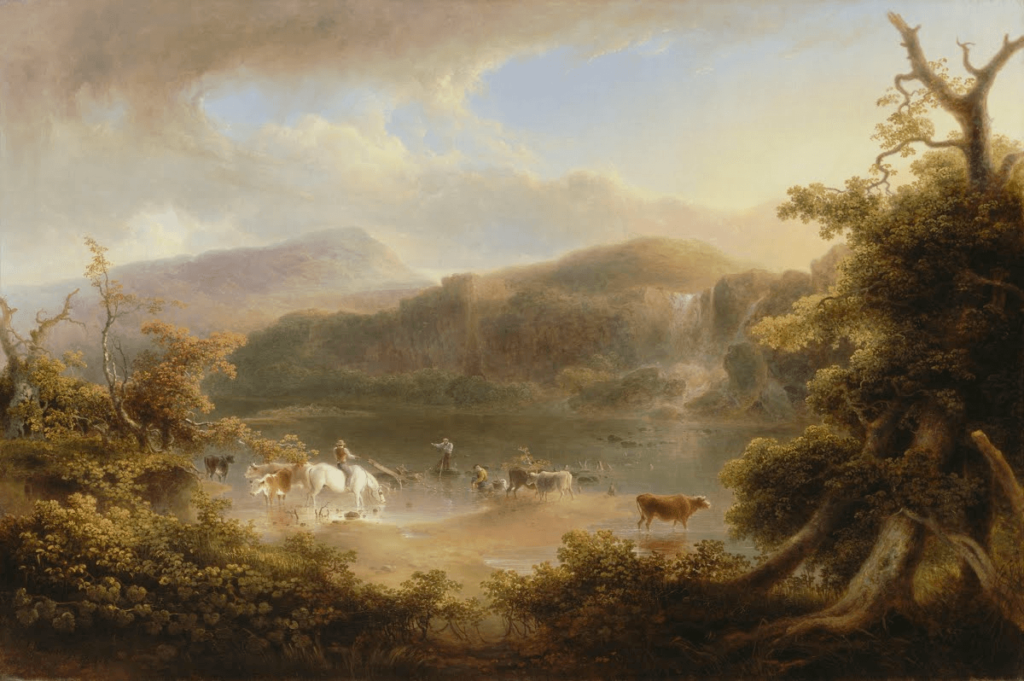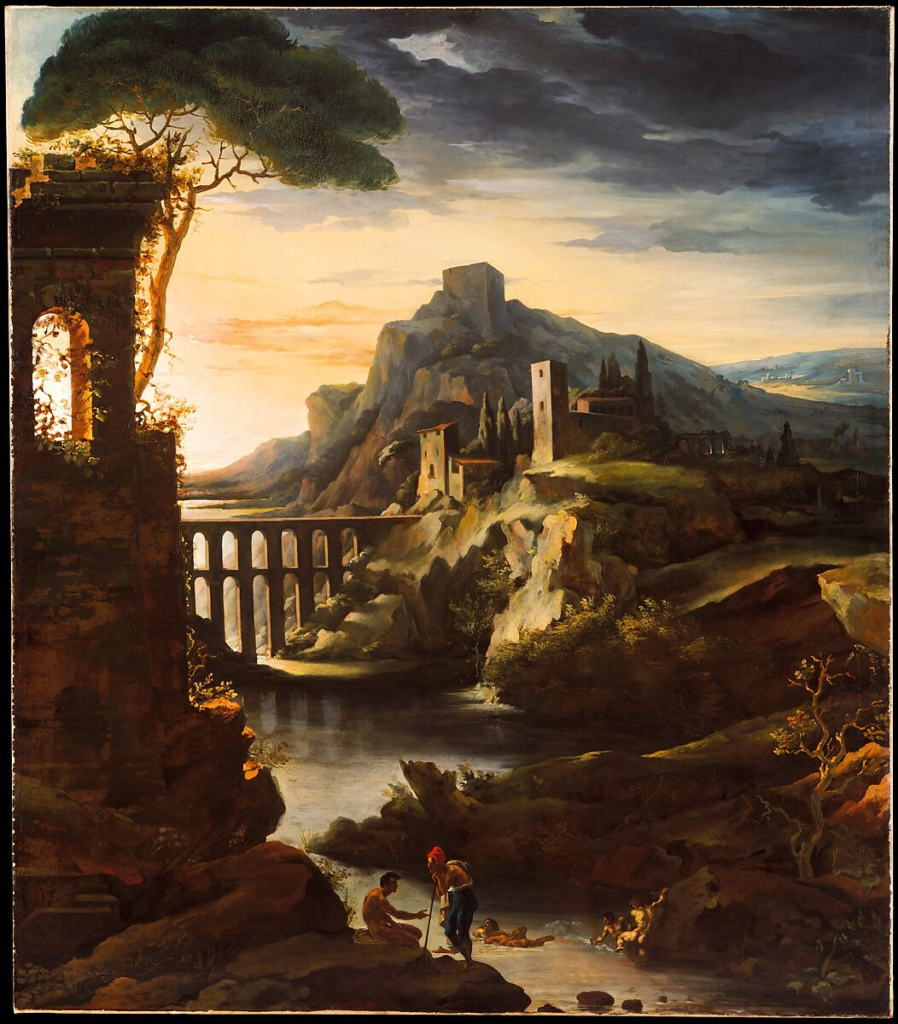Romanticism



Romanticism was an era in which people started to appreciate nature and revolt against the urbanisation of the world around them. While in literature the time frame differs slightly, in art the romanticism era began in the late 18th century/early 19th century this was around the time that the industrial revolution was changing the natural world and country side people were used to. Along with this the introduction of scientific explanations and research of nature started to appear. This added to the start of the romanticism era as people, Like Edmund Burke, who wanted people to still be in awe of nature while still being scared and afraid at the sheer vastness of it. This was a similar feeling to a modern day adrenaline junky. As the era continued to develop and appear it was also used to revolt against social norms at the time with it being the age of enlightenment, which is to favour reason and scientific reason instead of blind faith and superstition which came from religious backgrounds and held the power of nature in high regard. Freedom was created within this era as it allowed people to express their love for things (nature) with no reason again breaking the progressive movements into the world around them, giving people an escape from modern realities. This is still common now- people using nature as a means of escape and a break from the ever developing world. Typically in older works of this era it also depicted women normally in the middle of a battle field, waving flags or looking mis places this was that start of the idea of things being out of place in such a terrifying place that in fact beauty is domineering in the environment.
Characteristics of Romanticism
The main traits seen in romanticism work, whether it be photography or art, are that they show things against all reason, like a unbelievable storm with people just standing watching it, tiny in comparison. The work tries to produce a strong emotional reactional over anything rational and reason based. To create this the producers of the work use dramatic imagery, in art particularly it was large storms, where as in photography it can be similar things (imposing weather conditions) but it can also be sheer cliff faces, the vast expanse of fields anything that is imposing and dramatic causing awe in the viewer and slight fear rather than immediately jumping to reason the work. The work askes people to search for the subjective truth which is opinion based than than logical reasoning, this celebrates the individual rather than rewarding following and industrialisation.
The Sublime
The sublime is a very subjective and personal idea for each person. Often used to describe food when food is amazing. However for the romantic movement ‘sublime’ means an array of things from terror, fear and danger to soft, beautiful and powerful which actually falls into both definitions.



Snow Storm – Steam-Boat off a Harbour’s Mouth exhibited 1842
To differ the most common idea of ‘sublime’ as for a romantic, sublime can be used when nature over powers man. When man in puny in comparison to the strength and size of the nature, an example being big storms. This was common in older landscape paintings, if there was a person, people in the painting they tended to be tiny in comparison to the nature around them. This has carried on throughout history to modern day, where people in the face of nature are common, dramatic photos.
Edmund Burke
Burke’s prominent work was in the late 18th century just as the French revolution began and places became more urbanised. While this was happening it was also the age of enlightenment where people tried to explain everything, however Burke wanted to just prove you can like nature just because of its emotional impact, saying that Burke went onto become incredibly important to the sublime in Romanticism.
Burke an Anglo-Irish statesman who was also a philosopher. Spending most of his career in the UK, while born in Dublin and spending most of his career in the UK he was an MP between 1766 and 1794. He published multiple books one being, Reflections and revolution in France in which he became the modern founder of conservatism in 1790 in which he showed his mistrust in the rationalism of French Revolutionaries. After and during his time as an MP he criticised the British Government for its treatment towards Americans as well as wanting to express the importance of manners and religious institutions for ones own soul and morality. He is often linked to the sublime and romanticism because he produced the book ‘A Philosophical Enquiry into the Origin of our Ideas of the Sublime and Beautiful’ in 1757 which was the base for the English romanticism movement as it was a description of the sublime and what counts almost like rules and regulations for the sublime in romanticism. This gave English romantics a reason and proof of their movement. As Burke’s career continued he stayed as a modern empiricist philosopher, which is when people believe our knowledge of the world has come from sensory experiences, completely contrasting the idea of rationalists thoughts. Burke chose to, as common among empiricists, use scientific method to explain different uses of our passion and used he evidence form his science experiments and studies to explain the power of the sublime.
Burke’s Thoughts on the Sublime
Burke thought the idea of pain was much more powerful than those of pleasure, and that in fact the strongest pain of all (terror) was the fear of death. Saying this the sublime isn’t entirely our ‘bad’ emotions so much as anything that ‘overwhelms our faculty of reason’ making us incapable of thinking rationally. This meant he concluded the sublime was our biggest and strongest passion. Interestingly enough Burke believed that painting was inferior to poetry as he though painting tried to harness a huge idea into a clear representation but he thinks they always fail.


